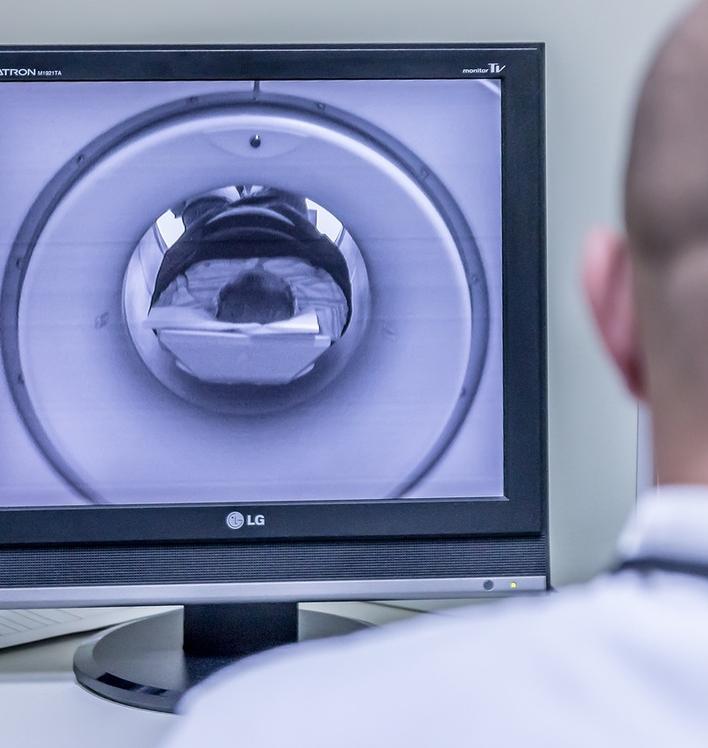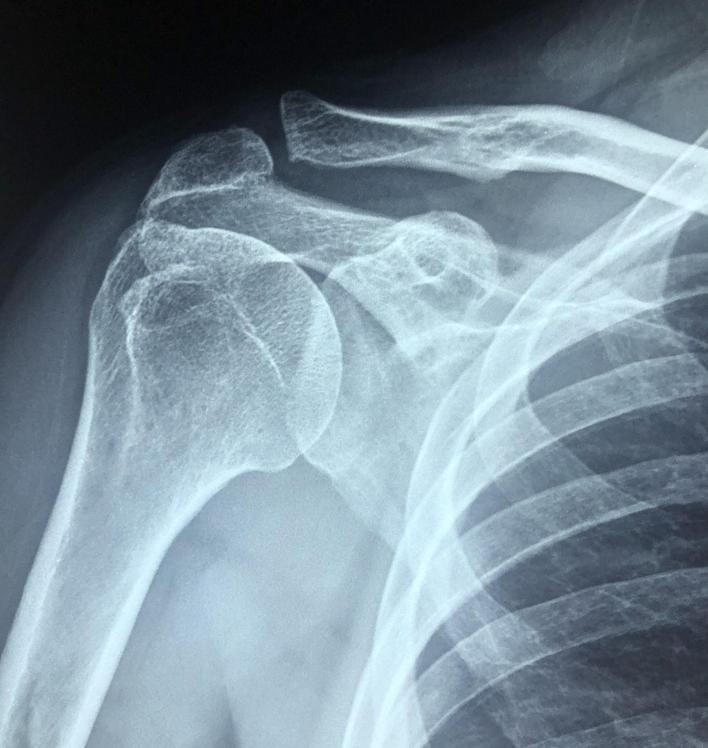Radiology

MRI (Magnetic Resonance Imaging)

X-ray
Fields of treatment
At MVZ RESTART-ORTHO, our patients have access to an in-house radiology unit. This enables fast, precise, and practice-oriented diagnostics—without detours through external practices or long waiting times. Thanks to the direct integration with our orthopedic and trauma surgery team, findings are discussed immediately and incorporated into an individualized therapy plan. The results are not only reported by a specialist in radiology but also reviewed directly with the treating orthopedic and trauma surgery specialists. This creates a seamless process: from diagnostics to interpretation to therapy decision—everything from a single source, in direct communication between physician and patient.

Knee
Orthopedic treatment of the knee aims to relieve pain, improve mobility, and restore joint function.

Treatment methods
Treatment methods such as Axomera rely on innovative, non-invasive therapy concepts for targeted pain relief and tissue regeneration.

Shoulder & Upper Body
In the area of the shoulder and upper body, the focus is on function-preserving and pain-relieving therapies for tendon, muscle, and joint conditions.
X-ray
Digital X-ray diagnostics is a proven and indispensable method for imaging bones and joints. It enables rapid clarification in the event of acute injuries, malpositions or degenerative changes. Modern digital systems are available at the MVZ RESTART-ORT HO, which operate with very low radiation exposure and deliver high-resolution images. This means that findings can be explained during the consultation with the doctor and incorporated into further therapy planning.
Q X-ray
1. When is an X-ray taken?
Primarily in cases of bone injuries, joint misalignments, suspected osteoarthritis, or calcifications.
2. Is X-ray harmful?
The radiation exposure of modern digital devices is extremely low and well below the medically permissible limits.
3. How quickly will I receive my results?
The images are available immediately and are usually discussed directly with the treating physician.
4. Can soft tissues be seen on an X-ray?
No, soft tissues such as cartilage, tendons, or ligaments are not visible on an X-ray—for this, an MRI is required.
5. Do I need to prepare for an X-ray?
No special preparation is necessary. However, jewelry or metallic objects in the examination area should be removed.
6. How long does an X-ray examination take?
Usually only a few minutes, with the actual image being taken in a fraction of a second.
7. Can I take the images with me?
Yes, you can receive the images digitally or on a CD upon request.
8. Why is it an advantage to have X-ray services within the MVZ?
Because diagnostics and therapy take place in one location, avoiding waiting times or duplicate examinations.
MRI (Magnetic Resonance Imaging)
Magnetic resonance imaging (MRI) is a modern, radiation-free procedure that provides high-resolution images of joints, muscles, tendons, ligaments and cartilage structures. This allows even the smallest injuries or degenerative changes to be precisely displayed, which would not be visible in other imaging techniques. At the MVZ RESTART-ORT Patients HO benefit from the immediate availability of their own MRI, so that examination, diagnosis and therapy planning interlock seamlessly.
Q MRI (Magnetic Resonance Imaging)
1. When is an MRI used?
When structures such as cartilage, meniscus, cruciate ligament, rotator cuff, or ligaments need to be examined.
2. Is an MRI dangerous?
No, it works with magnetic fields and radio waves, completely without X-rays.
3. How long does an MRI examination take?
Usually 20–30 minutes, depending on the specific question and the joint being examined.
4. What should I keep in mind during an MRI?
Metallic objects or implants must be discussed beforehand. Jewelry, watches, or cards should be removed before the examination.
5. Is an MRI loud or uncomfortable?
During the examination, loud knocking noises occur. You will be provided with ear protection, and the procedure itself is painless.
6. When will I receive my results?
The images are available immediately, are assessed by a radiologist, and then discussed directly with your orthopedic specialist.
7. Is an MRI always necessary?
No, many questions can also be clarified with X-rays. MRI is used specifically when a detailed visualization of soft tissues is required.
8. What is the advantage of having an MRI within the MVZ?
You benefit from fast, precise diagnostics, direct communication between radiologists and orthopedists, and immediate integration into therapy planning.
